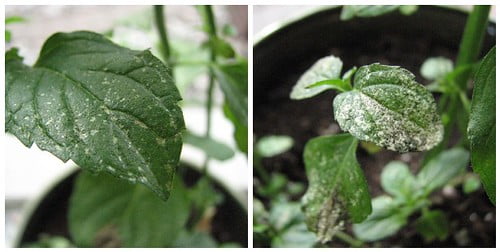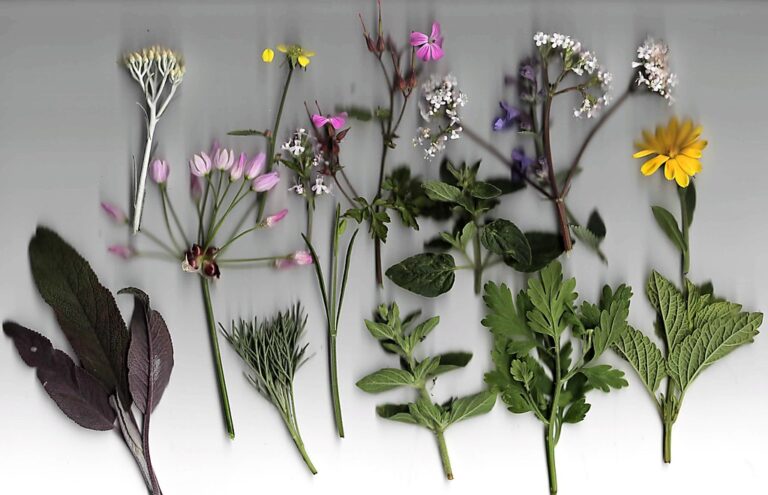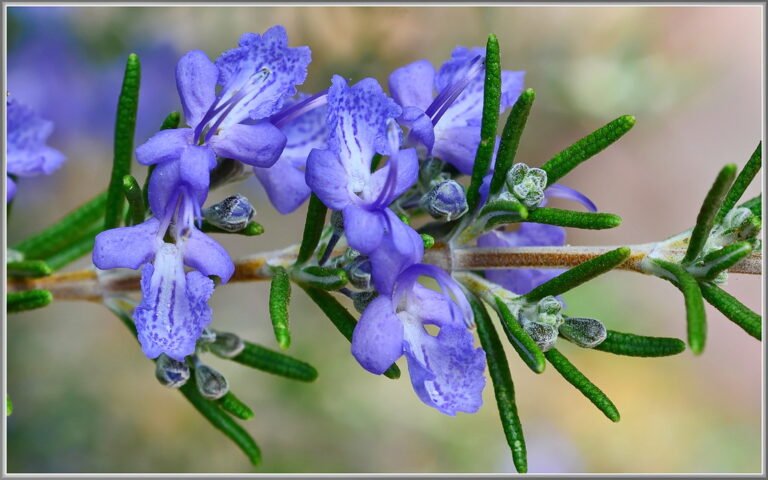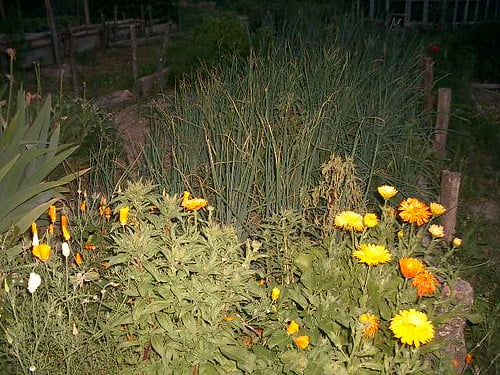Understanding the Best Companion Plants for Sweet Potatoes
Are you a sweet potato lover? Do you want to maximize the health and productivity of your sweet potato plants? If so, understanding the best companion plants for sweet potatoes is essential. By strategically pairing compatible plants, you can enhance the growth, flavor, and yield of your sweet potatoes. In this article, we will explore the benefits of companion planting, including pest control, soil fertility improvement, weed suppression, and disease prevention. Get ready to serve your sweet potatoes with the best companions!
Benefits of Companion Planting With Sweet Potatoes
When planting sweet potatoes, it's important to consider the benefits of companion planting. Companion planting is the practice of growing different plants together that can benefit each other in some way. In the case of sweet potatoes, there are several companion plants that can help improve their growth and yield. One of the main benefits of companion planting with sweet potatoes is pest control. Certain plants, like marigolds and nasturtiums, can help repel pests that are common to sweet potatoes, such as aphids and sweet potato weevils. Additionally, companion plants like beans and peas can fix nitrogen in the soil, which is beneficial for sweet potatoes as they require a lot of nutrients. By incorporating companion planting into your sweet potato garden, you can create a more balanced and productive growing environment.
Pest Control Through Companion Planting
To effectively control pests through companion planting with sweet potatoes, you can incorporate certain plants that act as natural repellents. These companion plants help to deter pests and protect your sweet potato crop without the need for harmful chemicals. One such plant is marigold, which emits a strong scent that repels insects like nematodes, aphids, and whiteflies. Planting marigolds around your sweet potatoes can create a barrier against these pests. Another beneficial companion plant is basil, which not only repels insects but also enhances the flavor of sweet potatoes when planted nearby. Additionally, planting garlic alongside your sweet potatoes can deter pests like aphids and spider mites. By strategically choosing companion plants that naturally repel pests, you can maintain a healthy and thriving sweet potato crop while minimizing the use of pesticides.
Improving Soil Fertility With Companion Plants
To improve soil fertility when planting sweet potatoes, consider incorporating companion plants that provide essential nutrients and enhance the overall health of the soil. Companion plants not only help to suppress weeds and repel pests but can also contribute to the fertility of the soil by fixing nitrogen, increasing organic matter, and improving nutrient availability. Legumes such as beans and peas are excellent choices as they have the ability to convert atmospheric nitrogen into a form that can be used by plants. Additionally, plants like clover and alfalfa can be used as cover crops to protect the soil, prevent erosion, and add organic matter when turned into the soil. Other beneficial companion plants include comfrey, which has deep roots that mine nutrients from the soil and accumulate them in their leaves, and marigolds, which release natural chemicals that deter harmful nematodes and insects. By strategically incorporating these companion plants into your sweet potato garden, you can significantly improve the soil fertility and overall health of your plants.
Enhancing Sweet Potato Growth With Compatible Plants
Now that we understand how companion plants can improve soil fertility for sweet potatoes, let's explore how they can further enhance the growth of your sweet potato plants. In addition to providing nutrients and attracting beneficial insects, companion plants can also provide shade, act as natural trellises, and deter pests. For example, planting beans or peas near your sweet potatoes can provide shade, which can help prevent the soil from drying out and keep the sweet potato plants cool during hot summer months. Additionally, planting herbs like sage or thyme near your sweet potatoes can help deter pests such as aphids or nematodes. These herbs release natural oils and scents that repel these pests, keeping your sweet potato plants healthy and thriving. By strategically selecting and planting companion plants, you can create a beneficial environment that promotes the growth and productivity of your sweet potato plants.
Companion Plants for Weed Suppression
Planting companion plants for weed suppression is another effective strategy to enhance the growth of your sweet potato plants. Weeds can compete with your sweet potatoes for nutrients, water, and sunlight, hindering their growth and productivity. By choosing the right companion plants, you can create a natural barrier against weeds, reducing the need for manual weeding or herbicides.
To effectively suppress weeds, consider planting ground covers such as clover or hairy vetch. These plants have dense foliage that shades the soil, preventing weed growth and conserving moisture. Additionally, their root systems help improve soil structure and fertility.
Another effective companion plant for weed suppression is the African marigold. This plant releases natural compounds that inhibit weed growth, making it an excellent choice for planting alongside your sweet potatoes.
Remember to space your companion plants properly to avoid overcrowding, which can create a favorable environment for weeds. Regularly monitor your garden and remove any weeds that manage to emerge. By implementing these strategies, you can enjoy a weed-free garden while promoting the growth and health of your sweet potatoes.
Attracting Beneficial Insects to Sweet Potato Beds
Attract beneficial insects to your sweet potato beds by incorporating plants that provide food and habitat. By creating a favorable environment for these helpful bugs, you can naturally control pests and promote the health of your sweet potato plants. One way to attract beneficial insects is to plant flowering herbs and flowers nearby. These include dill, parsley, cilantro, and marigolds. These plants produce nectar and pollen, which serve as a food source for beneficial insects like bees, butterflies, and ladybugs. Additionally, consider planting wildflowers and native plants to provide a diverse range of food and shelter options. Creating a diverse and inviting habitat will attract a variety of beneficial insects that will help keep your sweet potato beds healthy and pest-free.
Companion Plants for Disease Prevention in Sweet Potatoes
What companion plants can help prevent diseases in your sweet potatoes? When it comes to disease prevention in sweet potatoes, choosing the right companion plants can make a significant difference. One effective companion plant for disease prevention is marigold. The strong scent of marigolds repels pests and helps deter diseases like nematodes, which can damage sweet potato roots. Another beneficial companion plant is garlic. Garlic has natural antifungal and antibacterial properties that can help protect sweet potatoes from soil-borne diseases. Additionally, planting basil near sweet potatoes can help repel insects and prevent the spread of diseases. Finally, consider planting beans as companions for your sweet potatoes. Beans are nitrogen-fixing plants that can improve soil fertility and enhance the overall health of your sweet potato crop. By strategically choosing these companion plants, you can create a healthy and disease-resistant environment for your sweet potatoes.
Maximizing Yield With Strategic Companion Planting
To maximize your sweet potato yield, strategically choose companion plants that enhance growth and provide added benefits. When selecting companion plants for your sweet potatoes, consider their ability to attract beneficial insects, improve soil fertility, and repel pests. One effective companion plant is the marigold. Its vibrant flowers attract pollinators like bees and butterflies, which can increase sweet potato production. Marigolds also release a strong scent that repels harmful pests like nematodes. Another beneficial companion plant is the legume family, such as beans or peas. Legumes fix nitrogen into the soil, which is essential for sweet potatoes' growth and development. Additionally, planting herbs like basil or dill near your sweet potatoes can deter pests while providing aromatic flavors for culinary use. By strategically choosing the right companion plants, you can maximize your sweet potato yield and enjoy a bountiful harvest.
Companion Plants for Improved Flavor in Sweet Potatoes
To enhance the flavor of your sweet potatoes, consider incorporating a few specific companion plants into your garden. Companion planting is a technique that involves planting different crops together to benefit each other. When it comes to sweet potatoes, there are certain plants that can help improve their flavor. One such companion plant is basil. The aromatic oils released by basil can enhance the natural sweetness of sweet potatoes. Additionally, planting marigolds near your sweet potatoes can deter pests and improve their flavor. The strong scent of marigolds can mask any undesirable odors and create a more pleasant taste experience. Lastly, planting chives alongside your sweet potatoes can add a mild onion-like flavor that complements the sweetness of the potatoes. By strategically choosing companion plants, you can elevate the flavor of your sweet potatoes and create a more enjoyable dining experience for yourself and your guests.
Tips for Successful Companion Planting With Sweet Potatoes
To have successful companion planting with sweet potatoes, you need to carefully select compatible plants and consider their beneficial interactions. One important tip is to choose plants that have similar water and sunlight requirements as sweet potatoes. This will ensure that all the plants in your garden thrive together. Additionally, it's important to consider the size of the plants. Sweet potatoes have sprawling vines, so it's best to avoid planting them with tall or bushy plants that could shade them or compete for space. Instead, opt for low-growing plants or those that can be trellised to allow for proper airflow and sunlight. Finally, consider planting beneficial companion plants, such as beans or radishes, which can help deter pests and improve soil health. By following these tips, you can create a successful companion planting garden with sweet potatoes.
Conclusion
In conclusion, companion planting with sweet potatoes can provide numerous benefits such as pest control, improved soil fertility, enhanced growth, weed suppression, disease prevention, and increased yield. By strategically selecting compatible plants, you can also improve the flavor of your sweet potatoes. Remember to follow these tips for successful companion planting: choose plants that have similar growth habits, provide adequate spacing, and consider the specific needs of your sweet potatoes. With these techniques, you can create a thriving and productive garden.






